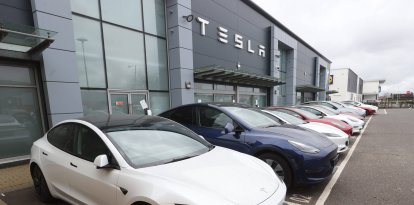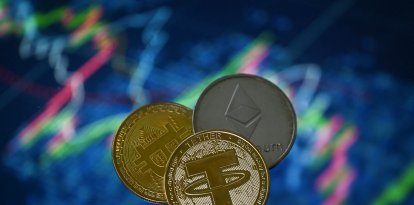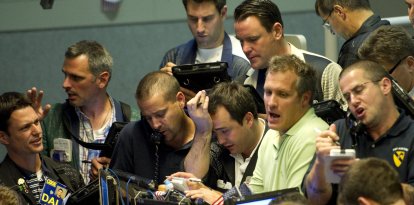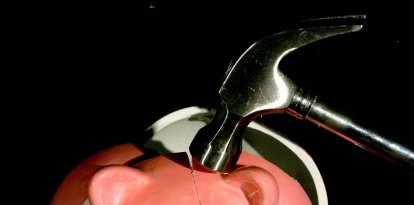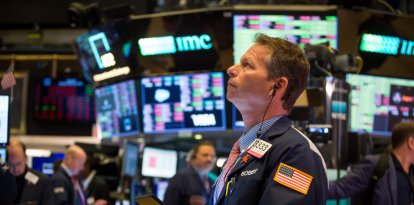July 4th of discontent
Economy is headed in the wrong direction.
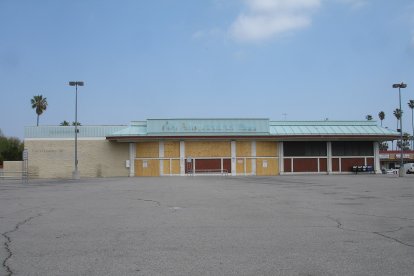
(Wikipedia)
Cathie Wood, CEO of Ark Invest and new economy guru, has warned,"We are in a recession and I think we have a big problem with inventories." It is difficult to assume that Wood is correct, with an annual growth rate of 3.5% and an unemployment rate of 3.6. And yet, it seems that he is simply anticipating what is to come.
The 4th of July is a day of celebration. But this year we received it with a stalled economy and skyrocketing prices. We are not there, but the country is approaching the buzzword of the 70s of the last century: stagflation. That is, unemployment and inflation.
On the move, but without fuel
What is the state of the economy at this time? The GDP growth figure is positive, at 3.5% in May, but is two points lower than the previous figure (5.5%). Other indices point to the same thing: positive movement, but less and less.
The PMI [poner el nombre completo y la sigla entre paréntesis y explicar] indicates expansion if it exceeds 50 points. The PMI for the industrial sector for June showed 52.4 points. It was, therefore, positive, but was worse than the May figure (57). The same is true for the services PMI: in May it was 53.4 points and in June it fell to 51.6.
The Conference Board 's consumer confidence index captures exactly that situation. The overall dropped in June from 103.2 points to 98.7. The current situation was high, but also fell from 147.4 to 147.1 points. And the future confidence index went from 73.7 points in May to 66.4 in June.
According to the University of Michigan indicator, consumer confidence is at the lowest point ever recorded. It dropped from 58.4 points in May to 50 in June. A year ago it was at 85.5.
Inflation, out of control
What is fueling the pessimism in the U.S. economy? Inflation. The latest figure shows a year-on-year rate of 8.6% (May). Prices have been rising increasingly sharply since March 2021. Then, inflation went from 1.4% to 2.6%, and it has not stopped growing. We have to go back to October 1981 to find such a high inflation rate. Today we need $111.74 to buy the same as $100 would buy in January 2021, when Biden took office.
83% of Americans are cutting back on personal spending because of inflation. This is the conclusion of a report published by Provident Bank. The increases that are most noticeable in the pocket are gasoline, daily groceries and clothing.
In the last century there have been four periods of prolonged inflation: the First World War, the Second World War, the 1970s and the present. The economic policy dilemma is whether to tackle inflation now and provoke a crisis or not to tackle it at the cost of a greater future crisis.
The Federal Reserve has started to raise interest rates from 0.25% to 1.75%. Experts believe that in 2022 rates will reach around 3.4%. Higher rates will help reduce inflation, but will also slow down the economy.
On the other hand, rates will make debt more expensive. Household debt is equivalent to 80% of GDP. This is a high level, but far from the pre-crisis levels of 2007. At that time, households had a debt of 100.9% of GDP. But the federal debt is at very dangerous levels, at 137.2% at the end of 2021.
Economy and elections
Currently, 40% of Americans see the economy as the country's main problem. A year ago, only 23% thought so. According to Gallup, 8 in 10 citizens earning $40,000 a year or less say they have had a hard time with rising gas prices.
Another survey, prepared by YouGov, indicates that the government's priority should be the economy. According to this poll, conducted between June 22 and 24, the issues that most concern Americans are inflation, the economy, crime and immigration.
RECOMMENDATION

